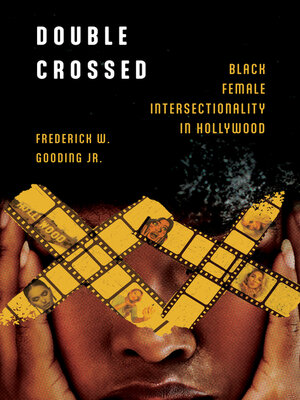Double Crossed
ebook ∣ Black Female Intersectionality in Hollywood · Race, Rhetoric, and Media Series
By Frederick W. Gooding Jr.

Sign up to save your library
With an OverDrive account, you can save your favorite libraries for at-a-glance information about availability. Find out more about OverDrive accounts.
Find this title in Libby, the library reading app by OverDrive.



Search for a digital library with this title
Title found at these libraries:
| Library Name | Distance |
|---|---|
| Loading... |
Despite Hollywood's recent efforts to appeal to more racially diverse audiences, mainstream movies routinely present a limited view of non-Whites generally, and Black women specifically, in stark contrast to the broadly developed spectrum of White characters. Black women characters are frequently rendered invisible, and even in films featuring their image, Black women characters too often fall prey to historically stereotypical patterns. These consistently marginalized Black female images serve to reflect and reinforce messages of racial imbalance distributed worldwide.
In Double Crossed: Black Female Intersectionality in Hollywood, author Frederick W. Gooding Jr. chronicles the Black female experience through the lens of Hollywood. Gooding begins by contextualizing the origins of early Black female imagery on screen, largely restricted to the domestic mammy figure, then traces how these images have shifted over time. Through close readings of such films as Gone with the Wind, Bringing Down the House, The Princess and the Frog, and The Help, as well as case studies looking at Oprah Winfrey and Shonda Rhimes, Gooding considers not only the image the Black woman creates, but also the shadow she casts. This volume demonstrates the historical, economic, and social consequences of Hollywood's distorted representation of Black women on screen and in real life.
In Double Crossed: Black Female Intersectionality in Hollywood, author Frederick W. Gooding Jr. chronicles the Black female experience through the lens of Hollywood. Gooding begins by contextualizing the origins of early Black female imagery on screen, largely restricted to the domestic mammy figure, then traces how these images have shifted over time. Through close readings of such films as Gone with the Wind, Bringing Down the House, The Princess and the Frog, and The Help, as well as case studies looking at Oprah Winfrey and Shonda Rhimes, Gooding considers not only the image the Black woman creates, but also the shadow she casts. This volume demonstrates the historical, economic, and social consequences of Hollywood's distorted representation of Black women on screen and in real life.







